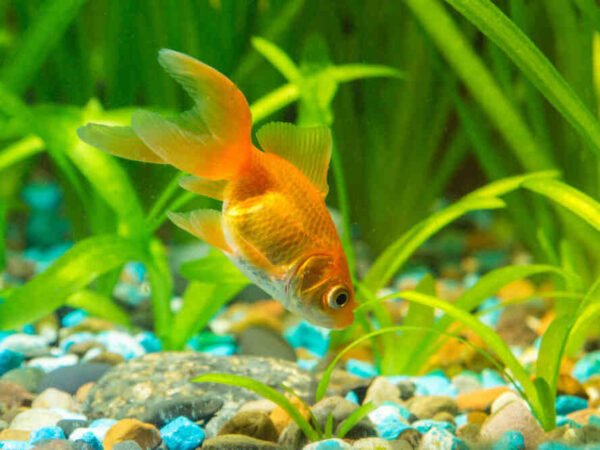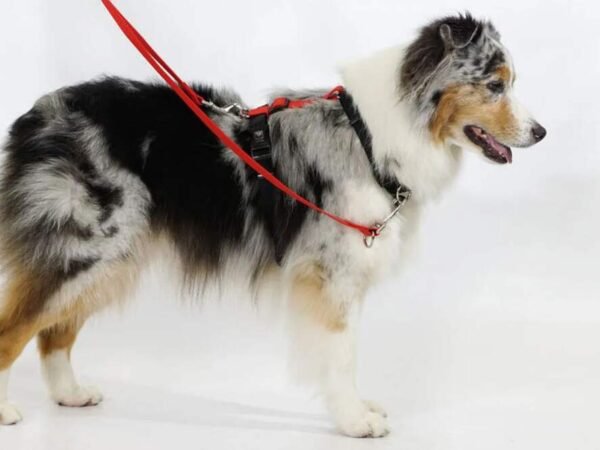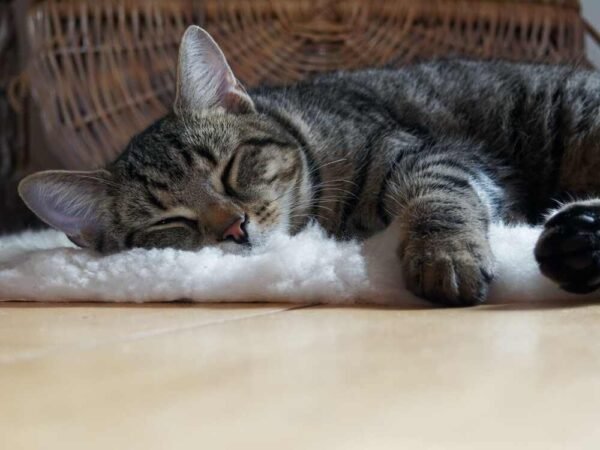Selecting safe toys for your pet is crucial for their health and well-being. The suitable toys provide mental stimulation, physical exercise, and comfort. However, not all toys are created equal. Here’s a guide to help you pick the safest toys for your pet, ensuring they stay happy and healthy.
Understanding Your Pet’s Needs
Every pet is unique, with different preferences and needs. Understanding these needs helps you choose suitable toys. Consider your pet’s age, size, breed, and activity level. Puppies and kittens need different toys than older pets, and active breeds require more engaging toys to keep them stimulated.
Age-Appropriate Toys
Young pets need soft, chewable toys to soothe their gums. Older pets might need gentler toys that don’t stress their teeth. Choose toys that match your pet’s developmental stage.
Material Matters
The material of the toy is critical for safety. Avoid toys made from toxic or harmful materials. Choose durable, non-toxic materials like rubber, nylon, or natural fibers. Check for small parts that could be swallowed or cause choking. Safe materials ensure your pet can play without risk.
Durable and Safe Materials
Rubber and nylon are durable and safe for most pets. Natural fibers like cotton or hemp are also good choices. Avoid toys with small parts or sharp edges.
Size and Shape
The size and shape of the toy should match your pet’s size and play style. A toy too small can be a choking hazard, while a toy too large might be challenging to play with. Ensure the toy is easy for your pet to pick up, chew, and carry.
Choosing the Right Size
For small pets, choose toys that are lightweight and easy to carry. Larger pets need sturdier toys that won’t break easily. The toy should be appropriate for your pet’s mouth size.
Avoiding Toxic Chemicals
Some toys contain harmful chemicals that can affect your pet’s health. Always check labels for safety information. Avoid toys with lead, phthalates, or BPA. Look for toys made with food-grade materials. Choosing toys free from toxic chemicals protects your pet’s health.
Safe Chemical-Free Toys
Choose toys labeled as non-toxic or made with food-grade materials. Avoid brightly colored toys that might contain harmful dyes. Ensure the toy is safe for chewing and has no toxic coatings.
Interactive and Engaging Toys
Interactive toys keep your pet mentally and physically stimulated. These toys challenge your pet and keep them engaged. Puzzle toys, treat dispensers, and interactive games are excellent choices. These toys help prevent boredom and destructive behavior.
Top Interactive Toys
Puzzle toys and treat dispensers stimulate your pet’s mind. Interactive games encourage physical activity and bonding time. Ensure the toy is durable and safe for solo play.
Soft and Plush Toys
Soft and plush toys are great for comforting pets. However, ensure they are durable and free from small parts. Pets can easily tear apart plush toys, so choose ones with reinforced stitching. Check regularly for wear and tear to avoid any choking hazards.
Choosing Safe Plush Toys
Select plush toys with reinforced seams and no small parts. Regularly inspect the toy for any signs of damage. Discard toys that are falling apart to prevent choking hazards.
Chew Toys
Chew toys are essential for dental health. They help keep teeth clean and reduce plaque buildup. Choose chew toys made from safe, durable materials. Avoid bones and rawhides that can splinter or cause blockages.
Safe Chew Toys
Rubber and nylon chew toys are durable and safe. Look for dental chews that help clean teeth and massage gums. Avoid hard chews that can damage teeth.
Monitoring Playtime
Always supervise your pet during playtime. This helps prevent accidents and ensures the toy is used correctly. Monitor for any signs of damage to the toy. Replace damaged toys immediately to avoid choking or ingestion of small parts.
Supervising Play
Stay close and observe your pet while they play. Remove any toys that show signs of wear and tear. Supervision ensures your pet’s safety during playtime.
Cleaning and Maintenance
Clean your pet’s toys regularly to prevent bacteria buildup. Some toys are dishwasher safe, while others need hand washing. Follow the manufacturer’s instructions for cleaning. Clean toys keep your pet healthy and free from infections.
Proper Cleaning Techniques
Use pet-safe soap and warm water for hand washing. For dishwasher-safe toys, place them on the top rack. Regular cleaning prevents the spread of germs.
Rotating Toys
Rotating toys keeps your pet engaged and prevents boredom. Introduce a few toys at a time and switch them out regularly. This keeps the toys fresh and exciting for your pet. Rotating toys also helps you monitor their condition and replace them as needed.
Keeping Toys Exciting
Store some toys out of sight and rotate them weekly. This keeps your pet interested and engaged. Regularly inspect the toys during rotation for any signs of damage.
Special Considerations for Different Pets
Different pets have different needs. Dogs have strong jaws and need durable toys, while cats prefer toys they can bat around and chase. Birds enjoy toys they can shred, while small animals like rabbits need toys they can chew safely.
Tailoring Toys to Your Pet
Research your pet’s breed and individual preferences. Choose toys that match their natural behaviors and interests. Providing suitable toys enhances their playtime and overall well-being.
Avoiding Electric and Battery-Operated Toys
Electric and battery-operated toys can be dangerous if not used correctly. Pets can chew on wires or swallow batteries, leading to severe injuries. If you choose these toys, always supervise play and store them safely when not in use.
Safety with Electric Toys
Use battery-operated toys only under supervision. Ensure all parts are secure and not accessible to your pet. Turn off and store the toys safely after playtime.
Consulting Your Veterinarian
Consult your veterinarian for toy recommendations. Vets can provide advice based on your pet’s health, age, and breed and identify any potential risks specific to your pet. Their expertise ensures you choose the safest toys for your pet.
Expert Advice
Discuss your pet’s toy preferences and any concerns with your vet. Follow their recommendations for safe and suitable toys. Regular vet visits help you stay informed about your pet’s health and needs.
Understanding the Role of Play
Play is essential for your pet’s physical and mental health. It provides exercise, reduces stress, and strengthens the bond between you and your pet. Choose toys that promote healthy play behaviors and support your pet’s development.
Benefits of Play
Play helps maintain a healthy weight, reduces anxiety, and prevents boredom. Engaging toys encourages physical activity and mental stimulation. Providing a variety of toys supports your pet’s overall well-being.
Reading Reviews and Recommendations
Reading reviews and recommendations helps you choose the best toys. Look for feedback from other pet owners about safety and durability. Online reviews and expert recommendations provide valuable insights, allowing you to make informed decisions about the toys you buy.
Trusted Sources
Use reputable websites and forums for reviews. Look for detailed feedback about the toy’s safety and effectiveness. Customer reviews provide real-life experiences that can guide your choices.
Using Toys to Train and Educate
Toys can be practical tools for training and education. Interactive toys and treat dispensers can reinforce positive behaviors. Use toys to teach commands, tricks, and problem-solving skills. Training with toys makes learning fun and engaging for your pet.
Training with Toys
Incorporate toys into your training sessions. Reward good behavior with playtime or treats from interactive toys. Training with toys strengthens the bond between you and your pet.
Avoiding Toys with Strings or Ribbons
Toys with strings or ribbons can be hazardous. Pets can swallow these parts, leading to choking or intestinal blockages. Avoid toys with long, loose strings or detachable parts. Always choose toys designed for safe, supervised play.
Safe Toy Choices
Remove strings or ribbons from toys before giving them to your pet. Choose toys with secure, non-detachable parts. Ensure the toy is safe for your pet to play with unsupervised.
Encouraging Social Play
Social play is essential for pets, especially dogs. Playdates with other pets can provide socialization and exercise. Ensure the toys used are safe for group play. Supervise the interactions to prevent any accidents or conflicts.
Benefits of Social Play
Social play improves behavior and reduces anxiety. It helps pets learn how to interact with others. Providing safe toys for group play enhances the experience.
Introducing New Toys
Introduce new toys gradually to avoid overwhelming your pet. Allow them to explore the toy at their own pace. Supervise initial interactions to ensure the toy is safe and enjoyable. Gradual introduction helps your pet accept and enjoy new toys.
Positive Introduction
Place the new toy near their favorite spot and encourage them to explore it. Use treats and praise to create a positive association. Supervision ensures a smooth transition to the new toy.
Conclusion
Choosing the safest toys for your pet requires careful consideration of their needs and preferences. Focus on age-appropriate, durable, and non-toxic materials. Regularly inspect and clean toys to maintain their safety.
Providing a variety of engaging toys supports your pet’s physical and mental health. By following these guidelines, you can ensure your pet enjoys safe and enjoyable playtime. Along with providing psychological and physical well-being, it is also essential for pet owners to secure them using advanced technology like electric dog fences and others. For more tips and recommendations on pet security systems, click here for more. Your pet’s happiness and safety are worth the effort.
Do Read: Simple Steps in Removing Cat Pee Smell in Your Home













